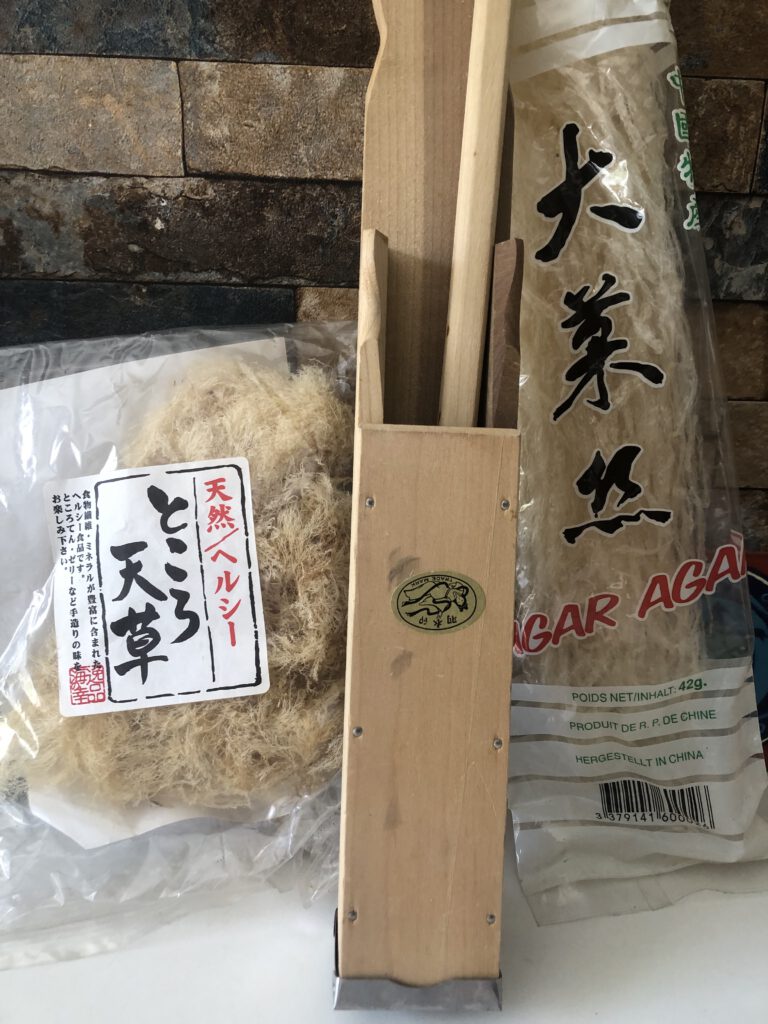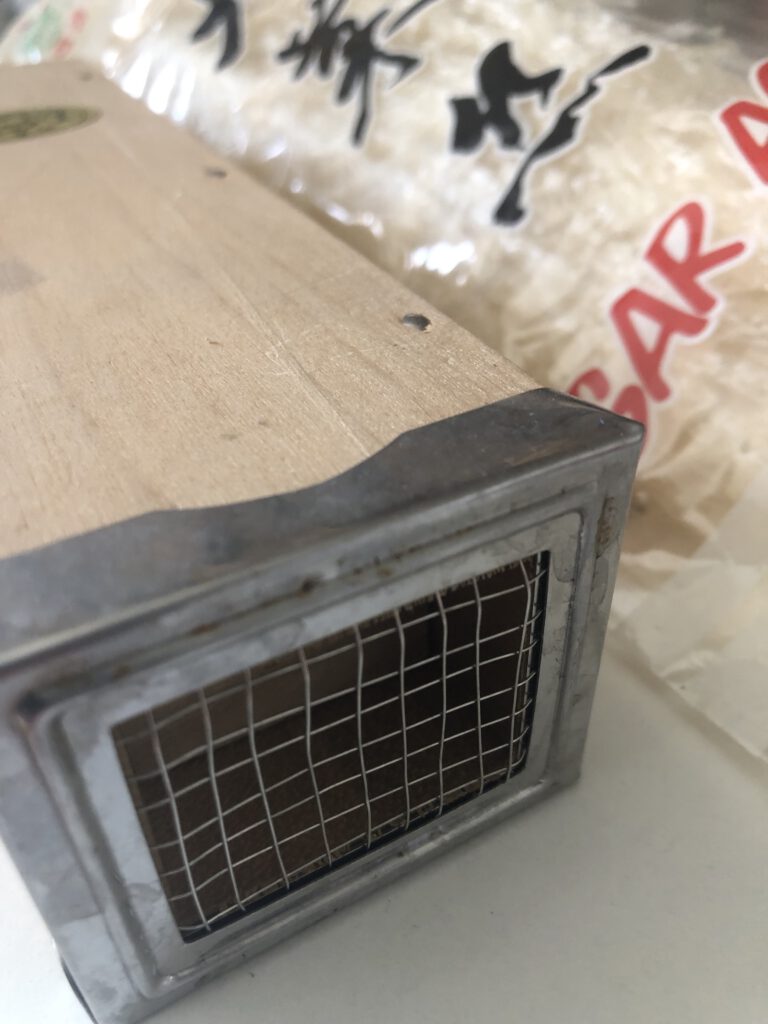
How Chance changes food history.
Seaweeds have been eaten for a long time in Japan. On the left we have Tengusa, a Gelidium variety. At one point it must have been boiled too long in a Soup, when it was dissolved into the liquid. Probably surprised, the soup was not eaten but it eventually hardened to a slicable gel. When this happened is not clear but what is clear that this technique was then used to produce slippery no-calorie noodles, called Tokoroten. A summer favourite eaten with a pungent sour dip in the Edo region, a sweet dark sugar syrup around the wealthier Ōsaka. One winter day in 1658 an Innkeeper made too many to sell that day and threw the rest out. There the noodles froze, defrosted the next day in the sun, froze again, defrosted until the innkeeper found white dry threads which he tried and found to have the same gelling power but less algae smell. This was the birth of Kanten, known throughout the rest of the world as Agar agar. Interestingly, what is known as Agā in Japan is Carrageenan. The stuff on the right are Agar threads, the device in the middle cuts Gels into noodle shape.

This Tentsuki Press works by pushing the gel through Wires. Incidentally the same is also used for artisanal Itokanten production.

Cooking Instructions for Tokoroten using Tengusa / Gelidium. As the cooked algae have to be filtered through a cloth, Kanten is used most of the times when making these Algae Gel Noodles.